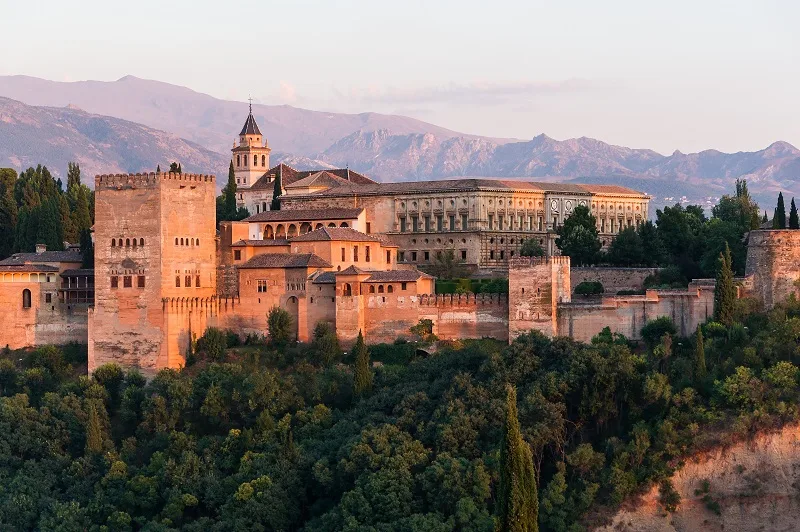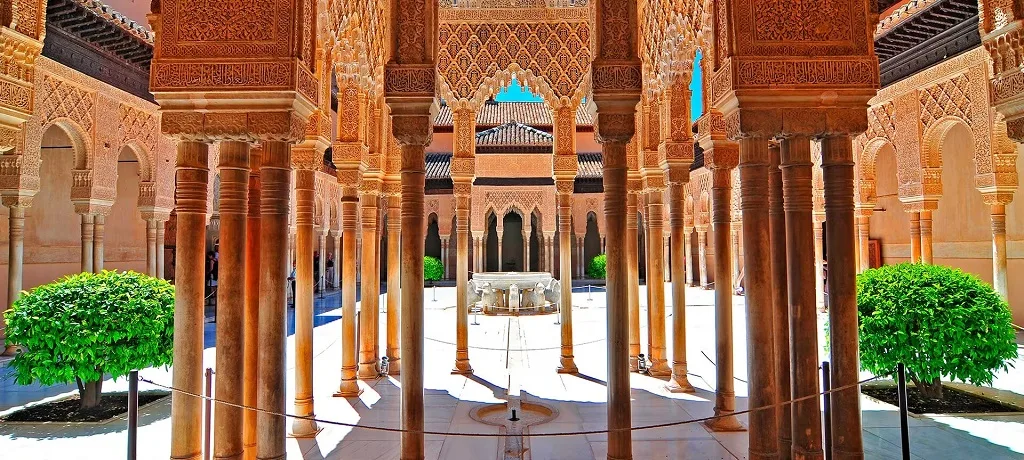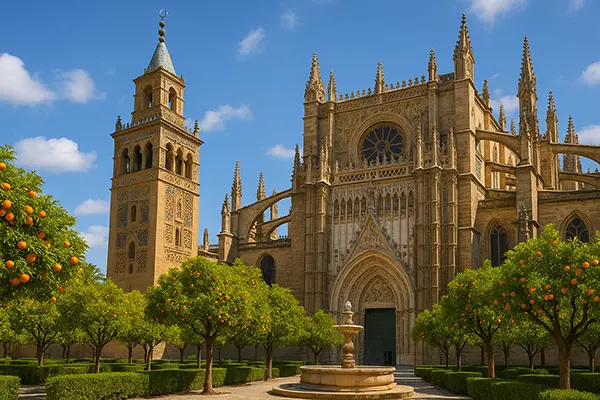The Splendor of Alhambra: A Journey through Time

The Alhambra, a magnificent fortress complex located in Granada, Spain, stands as a testament to medieval Moorish culture and its enduring beauty in the heart of Andalusia. With its intricate architecture and profound historical significance, the Alhambra is not just a site to visit but an experience to immerse oneself in.
What kind of fortress was it, built when and by whom?
Constructed during the mid-13th century by the Nasrid sultan Yusuf I, the Alhambra was designed as both a palace and a fortress. This architectural marvel was built atop Roman fortifications that date back to the 9th century. It served as the royal residence of the Nasrid dynasty and their court of the Emirate of Granada, the last Muslim dynasty on the Iberian Peninsula.
The Alhambra’s design reflects the culmination of artistic and cultural influences that flourished under the Nasrids. Its walls and towers, embellished with intricate Islamic calligraphy and vibrant tile mosaics, tell stories of a bygone era that shaped the history of al-Andalus.
Why was it built?
The primary purpose of the Alhambra was to serve as a royal palace for the Muslim rulers and a fortress to protect against Christian invaders. Over time, it became a symbol of political power and architectural prowess in Islamic Spain. Its strategic location, overlooking the city of Granada, allowed for a defensive stronghold while also providing a luxurious retreat for the sultan and his entourage.
Inside its walls, the Alhambra was a place of opulence and sophistication, with lush gardens, sumptuous courtyards, and flowing water features that epitomized the Islamic paradise on earth. It was also a center of learning and culture, attracting scholars, poets, and artists from across the Islamic world.
The construction of the Alhambra continued for over two centuries, with each ruler adding his touch to the complex, enriching its architecture and expanding its influence.
How are things here with food, accommodation, and how to get here?
Granada offers a plethora of dining options ranging from traditional Andalusian cuisines to contemporary international dishes. Near the Alhambra, numerous restaurants and cafes serve up local specialties like tapas and gazpacho, infused with rich flavors and history.
Accommodation near the Alhambra varies from luxury hotels housed in restored historic buildings to charming guesthouses offering a cozy stay. Many places provide stunning views of the fortress, enhancing the overall visitor experience.
Getting to the Alhambra is facilitated by Granada’s well-connected transport system. Visitors can fly into Granada Airport, take a train, or drive from major Spanish cities. Buses and taxis provide easy access to the fortress from any part of the city.
Advanced booking for Alhambra tours is recommended, especially during peak tourist seasons, to ensure entry as visitor numbers are caped daily for conservation efforts.

What are the attractions?
The Alhambra is replete with attractions, each corner telling a story. The Palacios Nazaríes, the heart of the Alhambra, is famed for its detailed stucco work and the iconic Patio de los Leones. The Generalife, a villa with lush gardens, provides a tranquil escape from the summer heat.
The Alcazaba, the oldest part of the Alhambra, offers panoramic views of Granada and the Sierra Nevada. The Palacio de Carlos V, built by the Holy Roman Emperor in the 16th century, showcases Renaissance architectural elements amidst the Moorish surroundings.
Art exhibitions and cultural events are frequently held within the palaces, offering insight into the vibrant history and ongoing cultural significance of the Alhambra.
For a deeper understanding, guided tours are available, which explain the complex’s historical context and architectural details.
Historical heritage
The Alhambra’s historical importance is profound, influencing not only Spanish architecture and culture but also the world’s understanding of Islamic art and civilization. Its preservation as a UNESCO World Heritage Site ensures that this heritage is protected for future generations.
The intricate craftsmanship displayed within the Alhambra mirrors the advanced state of science, arts, and technology in Muslim Spain during the medieval period. This legacy continues to inspire architects and historians worldwide.
Today, the Alhambra stands as a bridge between past and present, offering lessons in tolerance, innovation, and beauty, resonating well beyond its physical boundaries.




